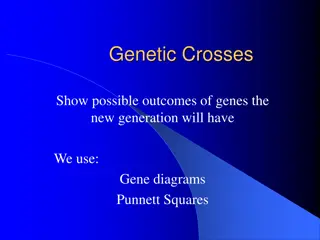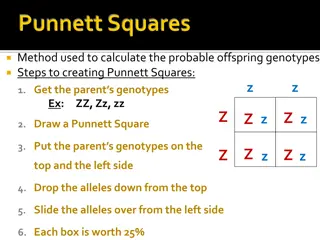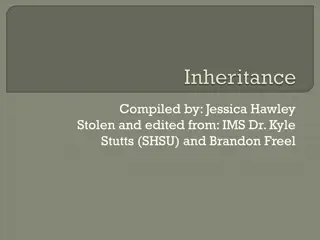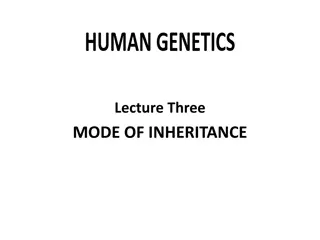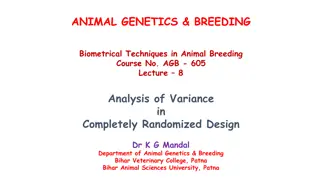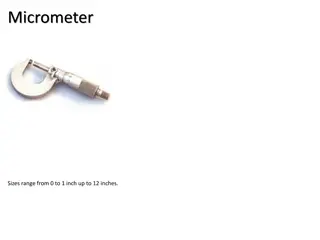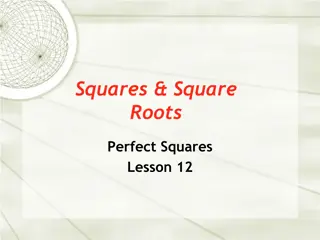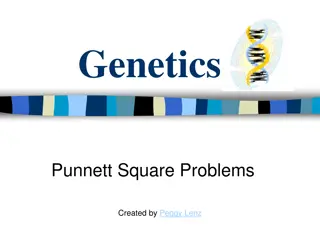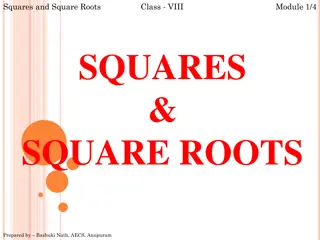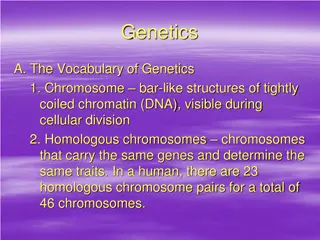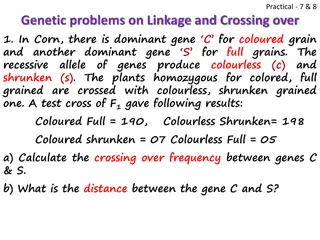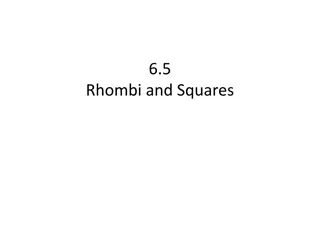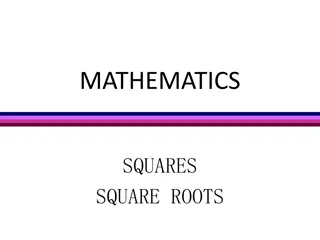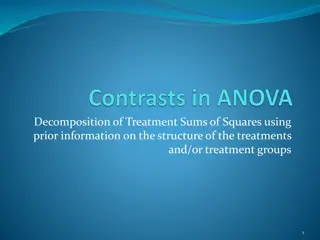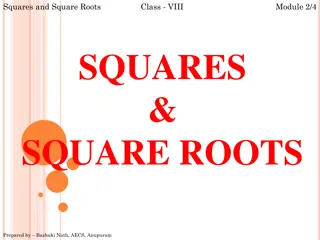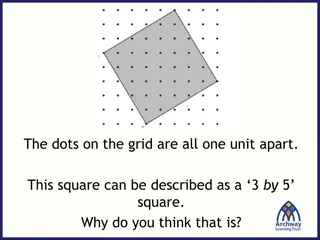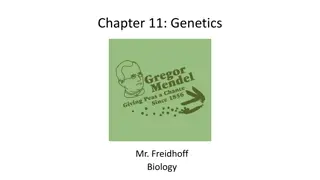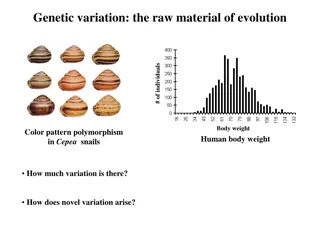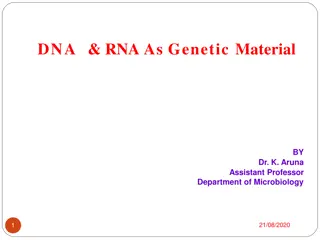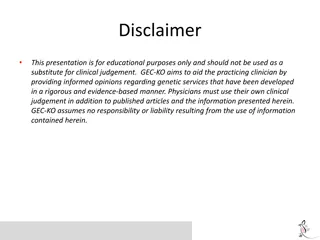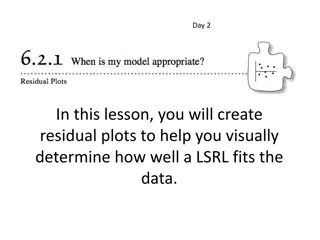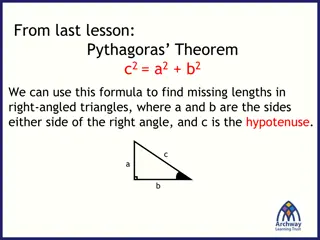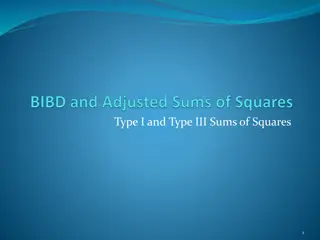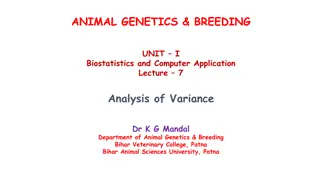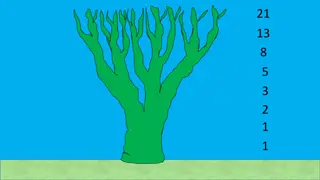Understanding Punnett Squares and Genetic Crosses
Explore the world of genetics through Punnett squares and genetic crosses, where traits like eye color are predicted using Mendel's principles. Discover the laws of dominance, segregation, and how to determine genotype and phenotype ratios in offspring.
Download Presentation

Please find below an Image/Link to download the presentation.
The content on the website is provided AS IS for your information and personal use only. It may not be sold, licensed, or shared on other websites without obtaining consent from the author. Download presentation by click this link. If you encounter any issues during the download, it is possible that the publisher has removed the file from their server.
E N D
Presentation Transcript
Punnett Squares: Genetic Crosses
Making Genetic Predictions Mendel found that you could predict the traits of a percentage of the offspring. He invented and used the tool of a Punnett square to illustrate these percentages.
Punnett Squares The Law of Dominance Traits are shown with a Capital letter for dominant and a lower case for recessive Brown Eyes (B) Blue Eyes (b)
Punnett Squares Eye Color Brown eyes B Blue eyes b Purebred individual with brown eyes (BB) Homozygous Purebred individual with blue eyes (bb) Homozygous Hybrid individual with brown eyes (Bb) Heterozygous
Punnett Squares Eye Color Father is (BB) Mother is (bb) Their Genes Are Crossed BB x bb Since we are looking at only 1 gene, it is called a monohybrid cross.
Law Of Segregation Law of Segregation Alleles for the same trait must be in separate sex cells. Father is (BB) as his diploid genotype Mother is (bb) as her diploid genotype Somatic Cells BB bb Sex cells B B b b
Monohybrid Crosses Monohybrid cross deals with one gene We are working with only eye color Setting up a punnet square The sex cells go on the outside of the square
Punnett Squares Bb = Brown All of the offspring will have brown eyes, but they will be heterozygous individuals. B B b b
Punnett Squares Eye Color Father has Brown eyes and is heterozygous (Bb). Mother has Brown eyes and is heterozygous (Bb).
Punnett Squares B b BB = Brown Bb = Brown bb = Blue BB Bb B Bb bb b
Ratios Genotype Ratio 1 BB to 2 Bb to 1 bb Phenotype Ratio 3 Brown eyes to 1 blue Eyes What is the chance of this couple having a child with blue eyes? 1/ 4 or a 25 % chance
Punnett Squares One parent is heterozygous for the trait the other parent is homozygous Eye Color Father (Bb) Brown Mother (bb) blue
Punnett Squares B b Bb bb b Bb bb b
Ratios Genotype Ratio 0 BB to 2 Bb to 2 bb (reduce) 0 BB to 1 Bb to 1 bb Phenotype Ratio 2 Brown eyes to 2 blue eyes (reduce) 1 Brown eye to 1 blue eye What is the chance of this couple having a child with blue eyes? or 50%
Mendels Work Pea Color: Yellow: Y Green: y P Generation YY x yy
Mendels Work Crossed two of the F1 to see what the F2 would look like.
Multiple Characteristics Punnett Squares work with multiple characteristics. Crosses can be done with an assortment of genes.
Dihybrid Crosses The Parents are heterozygous for both hair and eye color (BbEe: Brown hair and Brown Eyes). B: Brown hair - E: Brown eyes b: Blonde hair - e : Blue eyes Cross = BbEe x BbEe
Mendels Laws The law of segregation You can t have the same letters in a Sex cell The law of independent assortment The two genes will have their alleles placed into the same sex cells randomly. Work with one parent at a time BbEe (B b) (E e) Possible sex cells (BE) (Be) (bE) (be)
BE Be bE be BE Be bE be
Phenotype Ratios Phenotypes Brown Hair Brown Eyes _________ Brown Hair Blue Eyes Blonde Hair Brown Eyes _________ Blonde Hair Blue Eyes _________ _________
Phenotype Ratios Phenotypes Brown Hair Brown Eyes Brown Hair Blue Eyes Blonde Hair Brown Eyes Blonde Hair Blue Eyes ____9____ ____3____ ____3____ ____1____
Phenotype Percentages Phenotypes Brown Hair Brown Eyes ____56%___ Brown Hair Blue Eyes Blonde Hair Brown Eyes ____19%___ Blonde Hair Blue Eyes ____19%___ ____6%____


